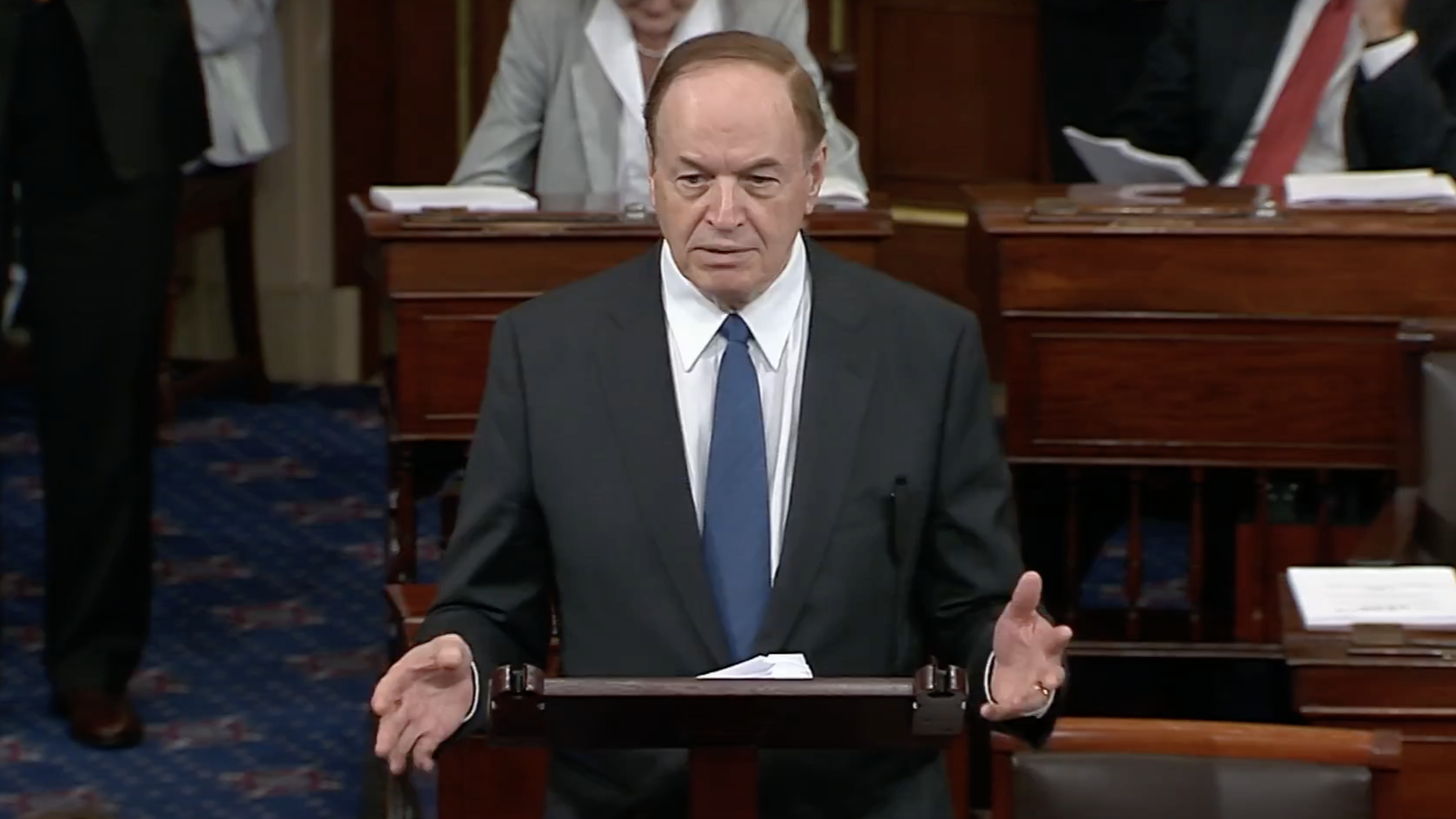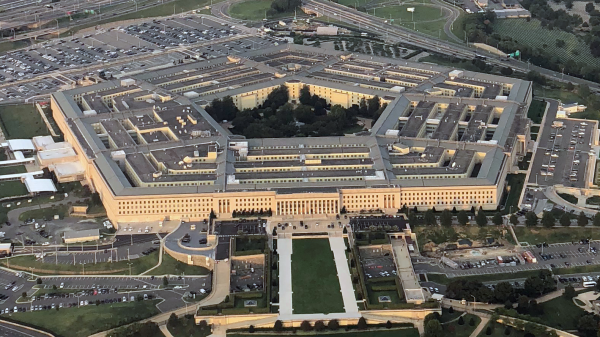Alabama Sen. Richard Shelby introduced an amendment to the budget resolution along with two of his Republican colleagues — Senate Armed Services Ranking Member Jim Inhofe, R-Oklahoma, and Senate Commerce, Science, and Transportation Committee Ranking Member Roger Wicker, R-Mississippi — that would instruct SASC to report reconciliation legislation that provides $50.2 billion for the military’s most pressing infrastructure needs, including improvements to shipyards; modernization of test ranges, facilities, ammunition plants and depots; 5G rollout; and PFAS remediation.
Shelby, Inhofe and Wicker introduced a similar amendment to HR3684, the Infrastructure Investment and Jobs Act, but Senate Majority Leader Chuck Schumer, D-New York, blocked it from receiving a vote on that bill.
“Democrats are all too willing to neglect our defense infrastructure needs while spending hand over fist on their liberal wish list,” Shelby said. “This so-called budget proposal is yet another example of that. Supporting trillions of taxpayer dollars for other infrastructure and social programs without investing in our national defense is shameful and inexcusable. We are responsible for providing our men and women in uniform what they need to protect us, and this amendment helps accomplish that. National security is supremely important. If Senate Democrats continue to prioritize a reckless social spending spree and ignore the needs of our Armed Forces, the future of this country will be in jeopardy.”
“President Biden’s defense budget proposal was woefully inadequate, and Senator Sanders’ and the Senate Democrats’ reckless tax-and-spend budget continues these misguided efforts to shortchange national defense funding when we can least afford it,” Inhofe said. “Our amendment provides an additional $50.2 billion for vital defense infrastructure that supports high-paying jobs in states across the country, improves the lives of Americans, especially our service members and their families, and makes our country safer and more secure. Senator Schumer didn’t allow a vote on this amendment during the infrastructure debate, but there’s no stopping amendments during vote-a-rama.”
“As national Democrats continue their headlong rush toward a massive $3.5 trillion reckless tax and spending spree, Senate Republicans are working to ensure the needs of our nation’s military are not overlooked,” Wicker said. “Over the past few days, Senator Shelby, Senator Inhofe, and I have offered a sensible proposal that would help to address a massive backlog of repair and construction projects at Department of Defense facilities, including our nation’s shipyards, but our efforts have been blocked at every turn. These provisions have wide support from our defense leaders, and I know for a fact that many of my Democratic colleagues agree they are necessary in light of recent advances by China and Russia. I am hoping that common sense will prevail, and they will agree that this is an investment we cannot afford to skip over.”
The amendment summary provides instructions for SASC to report legislation that provides a total of $50.2 billion to support the military’s most pressing infrastructure needs. These projects will meet the military’s most urgent modernization priorities, address risks to our national security, improve the well-being of service members and their families, and support good-paying jobs across the country.
Specifically, this funding would support:
- Shipbuilding – $25 billion
- Test ranges – $4 billion
- Facilities Sustainment, Restoration, and Modernization (FSRM) – $4 billion
- Depot modernization – $4.5 billion
- Army ammunition plants – $2.5 billion
- DOE/NNSA Facilities and Maintenance – $3.850 billion
- High-priority Military Construction Projects – $2 billion
- 5G Rollout – $2.5 billion
- PFAS Remediation – $1.5 billion
The sponsors say that our nation’s shipyards are too old and too small to expand our Navy’s fleet at the rate needed to combat China. A total of $25 billion — nearly half of the funding provided by this amendment — would support critical shipbuilding infrastructure. This includes $21 billion for the Navy’s public shipyards, $4 billion for private construction and repair yards, and $350 million for the Coast Guard shipyard. These facilities are in Virginia, Maine, Rhode Island, New Hampshire, Washington, Hawaii, Connecticut, Mississippi and Alabama.
This is nearly identical to the SHIPYARD Act, which has bipartisan support, including more than 10 Democrat cosponsors.
Chief of Naval Operations Admiral Mike Gilday called shipyard modernization a “once-in-a-century investment.” Among other things, this spending would drastically improve the ability of America’s shipyards to get the most out of our existing fleet and reduce stress on our sailors.
The sponsors say that one reason the U.S. military is able to stay ahead of our competitors is because of investments in innovative research, development, testing and evaluation that have maintained our technological advantage for decades. But now, as competitors like China seek to catch up and invest heavily in their own technologies, we risk falling behind — and in some cases we already have.
The sponsors claim that by modernizing our test facilities and ranges, we will be ready for the next generation of equipment and munitions that will deter any enemy. The amendment supports modernization priorities at all test and training ranges, including the following:
- Redstone (Ala.)
- – Joint Pacific Alaska Range Complex (Alaska)
- Huachuca (Ariz.)
- Yuma Proving Ground (Ariz.)
- Naval Air Warfare Center Weapons Division, China Lake and Point Mugu (Calif.)
- Eglin (Fla.)
- Pacific Missile Range Facility (Hawaii)
- Aberdeen Test Center (Md.)
- Naval Air Warfare Center, Pax River (Md.)
- Naval Undersea Warfare Center, Newport (R.I.)
- Nevada Test and Training Range (Nev.)
- White Sands Missile Range (N.M.)
- Dugway Proving Ground (Utah)
The sponsors say that our military’s facilities maintenance deficit is nearly $135 billion, and growing each year. More than any other area of the defense budget, FSRM has suffered mightily in the sequestration era. The funding in this amendment would address the most critical maintenance and repairs needed at Army, Navy, Air Force, and Defense-wide facilities in every state of the U.S. and abroad, from simple HVAC repairs to addressing structural failings in buildings.
The sponsors added that our nation’s military depots are responsible for the manufacture, maintenance, repair, and overhaul of military weapons and equipment — yet most of these facilities date back to World War II. At risk is not only the military’s ability to meet the demands of current missions but also its capacity to surge and confront any future threat.
This funding supports much-needed modernization at all depots, including the following:
- Anniston Army Depot (Ala.)
- Davis-Monthan Air Force Base 309 AMARG (Ari.)
- Warner Robins Air Logistics Complex (Ga.)
- Oklahoma City Air Logistics Complex (Okla.)
- Tobyhanna and Letterkenny Army Depots (Pennsylvania)
- Corpus Christi and Red River Army Depots (Texas)
- Ogden Air Logistics Complex (Utah)
- Navy North Island (Calif.)
- Navy Norfolk (Va.)
The sponsors maintain that although the Army is investing heavily in ammunition, the nation’s Army ammunition plants, most of which were built in the 1940s, are struggling to keep up with demand. The sponsors maintain that the Army still needs $14-16 billion to fully modernize these plants and make them safer, more capable, and more sustainable, Army officials told Congress late last year. This funding supports modernization efforts at all of the nation’s Army ammunition plants, including:
- Iowa (Iowa)
- Lake City (Mo.)
- Scranton (Pa.)
- Holston (Tenn.)
- Radford (Va.)
The sponsors added that the National Nuclear Security Administration’s facilities, which support our nuclear deterrent, are crumbling and are unable to meet future needs of our nuclear security enterprise. This funding would support the key NNSA facilities that enable the U.S. to support its nuclear requirements, as well as create good-paying jobs immediately.
These priorities include:
- $1.4 billion for the NNSA’s nationwide deferred maintenance backlog;
- $500 million to modernize NNSA’s aging and deteriorating mission-enabling infrastructure that supports R&D and manufacturing capabilities in New Mexico, Nevada, South Carolina and Tennessee, and Texas;
- $400 million for the safe demolition of contaminated equipment at the MOX facility in South Carolina, which will allow for the new construction of pit production lines necessary for America’s nuclear security;
- $250 million to construct mission-enabling facilities at Los Alamos National Laboratory in New Mexico to support additional pit production;
- $600 million to construct facilities and infrastructure at a training facility for workforces that will support both Los Alamos in New Mexico and the Savannah River Site in South Carolina;
- $500 million to safely remove and dispose of equipment in PF-4 in New Mexico to allow for new construction of pit production lines; and
- $200 million for NNSA’s lithium and tritium facilities.
The sponsors claim that like FSRM, military construction was deprioritized in the sequestration as Department of Defense leadership tried to manage the strategy-resources mismatch. The military has a long list of deferred military construction projects both at home and abroad that could be executed efficiently and effectively over the next several years — from new training ranges and munitions storage igloos to improved barracks and modernized family housing.
The sponsors say that funding for 5G Rollout would support the rollout of secure 5G infrastructure to military bases across the country. 5G technologies are critical to the interconnection of the joint force and provide our warfighters with access to more advanced technologies, real-time data and greater efficiency on the battlefield. Without additional bandwidth, technologies like advanced command-and-control systems and artificial intelligence (AI) applications for maintenance will struggle.
The sponsors say that spending $1.5 billion for PFAS Remediation to address the environmental and health impacts of the previous use of per- and polyfluoroalkyl substances (PFAS) by the military would accelerate the cleanup of sites across the country contaminated by PFAS.
The infrastructure bill passed the Senate on Tuesday and now Congress is expected to deal with the Democratic spending bill.
Shelby is the vice chairman of the Senate Committee on Appropriations and its subcommittee. Shelby is retiring from the Senate after 36 years of Senate service and a political career that has spanned across six decades.
















































